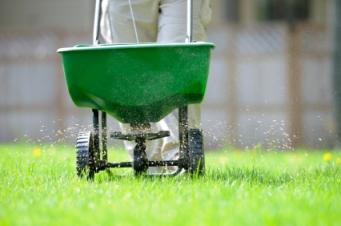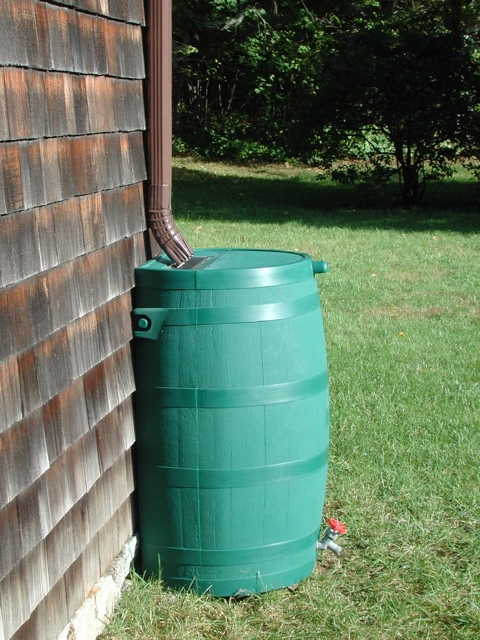Resources for Individuals
Choose to Prevent and Reduce Your Stormwater Runoff
Choose to Prevent pollution from being released in the first place. When you take a minute to think about it, preventing stormwater pollution is directly connected to chores we do related to the upkeep and care of neighborhoods, homes and vehicles.
Choose to Reduce what you can and manage what you can’t. You should understand now that stormwater runoff is generated by rainwater hitting impervious surfaces, such as rooftops, driveways, streets and parking lots. Making every attempt to prevent pollution, now try your hand at reducing stormwater runoff making its way to the closest storm drain. Manage what you can’t reduce, too. In most cases, infiltration based practices are sized to capture and infiltrate the 1.25″ rain or less. However, sometimes it rains more than that in a 24 hour period. That means these infiltration practicies should have a backup plan to safely release the excess rainwater that flows through the BMP.
Choose to Prevent
Littering
Don’t be a litterbug! This includes unintentional littering by keeping a lid on garbage cans and recycling bins each week. Pick up litter in the neighborhood, especially if you see it in the streets. Your neighborhood will be better for it and water pollution adverted (as litter is washed down the storm drain).This especially means NO CIGARETTE BUTTS thrown out car windows or dropped on the ground, which is littering, plain and simple. Cigarette butts are paper wrapped in plastic that doesn’t break down in nature. When washed down the storm drain they become “food” that in turn harm, rather than feed, fish, frogs and other living creatures who live in or near the water.
Adopt a storm drain! Some communities have an adopt a storm drain program, however if your community does not have one that doesn’t mean it can’t be adopted. Adopting entails making sure your storm drain is free of debris, like litter, leaves and grass clippings! This not only helps protect water quality but reduces the likelihood of localized flooding on your street. Make sure your storm drain is labeled “Dump No Waste Drains to Streams” – most communities have either a painted stencil or a metal button that is glued on. This is a great reminder, especially for neighbors who think the storm drain is a yard waste receptacle to not do that.
Lawn Care
Don’t go “bare” on your lawn for very long. If you have spots in your yard without grass, that area is subject to erosion when it rains. Reseed those spots and while your at it – reseeding your entire yard on a regular basis (once every year to every two years). When you do reseed, try aerating first and add a 1/4″ to 1/2″ layer of compost before seeding to keep your turf healthy and strong.
Got grass clippings? Mulch mowing is a great way to go (mow without collecting the grass clippings) to return nutirents back to your yard. If you mulch mow, make sure the mower faces the yard at all times – not the street or driveway. If grass clippings do end up on the street or on the drive, sweep them up, if not you – they can be swept away with the next rain and clog up the storm drain – generating a awful stink as they slowly decompose. If you do bag your grass clippings, consider backyard composting to turn grass clippings into a great soil amendment.
Before fertilizing your yard test your soil to determine the nutrients it needs – most soil in Iowa has plenty of Phosphurs in it already – double check to make sure if you need it or not. If it doesn’t need it – purchase fertilizer that is Phosphorus or “P” Free. Phosphorus is the “P” in the NPK (N = Nitrogen and K=Potassium) and is the middle number on fertilizer bags. “P” is the leading cause of algae growth in detention basins and Iowa lakes. The less we use, the more likely your neighborhood detention basin will be algae free. If you do fertilizer, avoid overfertilizing – let your soil test determine how much of what you apply on your lawn!

The same goes for herbicides and all pesticides and fertilizers – the least toxic product as possible (some weeds are killed by hot salt water), buy only what you need and use it all up. If you have extra, be sure to safely recycle any leftover product with your local Regional Household Hazardous Material Collection Center rather than disposing of them in your trash can.
Moving into Fall, and your community has a leaf collection program – rake leaves rake them TO the curb, not in the streets. This keeps your storm drain free of clogs and debris while making it easier for the collection crew to pick-up leaves and take them away for you.
If you are looking for a laboratory that can test the content of your soil, here are a few options:
Vehicle Care
If you plan to wash your car or truck do so on a grassy area, allowing the water to absorb into the ground rather than draining away down the street and into the closest storm drain. The soap you choose matters as well – as with lawn fertilizers, try to go “P” free here too. The best bet though is going to a car wash – they send all wash water down the sanitary sewer for treatment, instead of the storm sewer and no treatment.
The rainbows seen in parking lots puddles after it rains is evidence of hydrocarbons (oil leaks) from cars and trucks. To be sure your vehicle doesn’t contribute to water pollution make sure all leaks are fixed in record time and keep our streets, driveways and parking lots clean.
Dispose of oil and other automotive fluids in a safe manner – never dump on the ground, down the storm drain or in the garbage can. You should be able to recycle any oil and other automotive fluids for free at most retailers who sell them. Check with your neighborhood store, like AutoZone, NAPA or O’Reilly’s to see what can be recycled with them for free (includes lead acid batteries, anything metal and other fluids.) Never store these items outside, uncovered exposed to rain or other water.
Other Home Care
Pick up after your pet, whether it is on a walk, in a park or in your yard. It’s the right thing to do, people won’t step in it and you prevent the poop from entering our streams – where kids usually play! Once you pick it up dispose it in the trash can or flush it down the toilet. Never throw the bag of poo down a storm drain, that is considered illegal dumping and should be reported to your community if you ever see it happening.
When summer is over and the pool and spa needs to be emptied be sure to contact your local city to find out how they want you to dispose of the water. Some may recommend that you run the chlorinated pool and spa water across vegetation first. It will slow down the flow, allowing for bacterial removal and the chlorine (which can harm aquatic life) to dissapate before it reaches the closest storm drain. Others may want you to discharge the water to the sanitary sewer. Always recycle outdated or unwanted pool chemicals with your local Regional Household Hazardous Material Collection Center.
Choose to Reduce
ConnectThere are several instances where impervious surfaces are directly connected to the storm drain system. The primary direct connection is when downspouts are pointed directly to the driveway. A simple fix is installing an inexpensive elbow onto your downspout and point your gutter toward a grassy area, such as your yard, rather than the driveway.

Disconnect
Grandma and Grandpa had the right idea when they collected their rain in a rain barrel or cistern and reused it when it wasn’t raining! The use of rain barrels is becoming a popular practice once again – several non-profit organizations in Iowa sell rain barrels for fundraising – check with your local community, your local Soil and Water Conservation District (SWCD) or your local nature or conservation center to see if they have a rain barrel program. You can also make your own with a 55 gallon drum, a few tools, a spigot and window screen – check out the directions here. An average 1,200 square foot roof generates about 934 gallons of rainwater during a 1.25″ rain and an average rain barrel collects 55 gallons of rain. That means one rain barrel will need to be supplemented with another practice if you’re goal is to manage the 1.25″ rain (the Water Quality event in Iowa) that falls on your rooftop.
Capture Rainwater
There are many BMPs that can be sized to infiltrate the water quality event and seamlessly incorporated into your landscape. These practices include:
- Soil Quality Restoration – reduce soil compaction and increase soil organic matter by adding compost.
- Rain Gardens – landscaped depressional area with plants that don’t mind getting their feet wet for a short amount of time.
- Native Landscaping – native to Iowa that is, replacing turf grass with native grasses and plants (greatly eliminates your need to fertilize, mow or water your lawn).
- Permeable Pavement – asphalt, concrete and brick pavers constructed on top of a rock base that allows rain to soak into the rock below and infiltrate into the ground.
